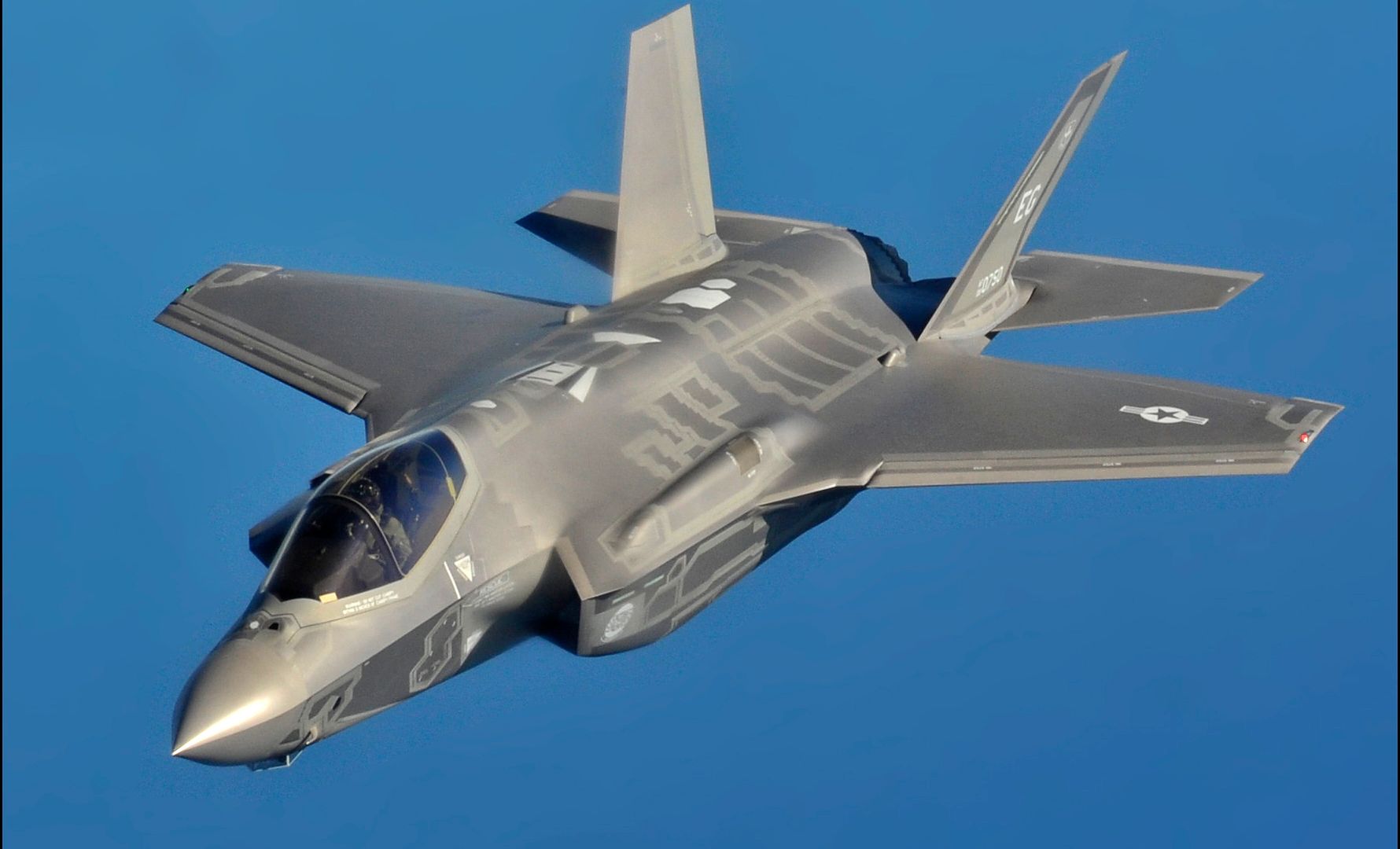The US Defense Department still refuses to kill the F-35 Joint Strike Fighter program despite two decades of costly overruns and technical issues because of the US government’s corrupt sole-sourcing acquisition process, politics and the nature of the oligopolistic defense industry, a Russian defense analyst told Sputnik.
US Military Investing In Advanced Biotech Research To Create ‘Super-Human’ Soldiers?
The F-35 program, originally approved by Defense Secretary Donald Rumsfeld and his team in October 2001 under President George W. Bush, is projected to be the most expensive aircraft and military program in history, totaling at least $1.5 trillion.
The aircraft continues to underperform in most key areas and be outfought by more than 40-year-old F-15 Eagle designs in combat tests, according to the analysts.
The aircraft’s main defense contractor Lockheed Martin still has not resolved 864 software and hardware defects since the development phase finally ended years behind schedule in April 2018, the Government Accountability Office (GAO) said in a report on Tuesday.
In recent months, Lockheed Martin managed to rectify only eight of 872 defects that were pending in March, GAO Director Jon Ludwigson said in the report. The F-35 still cannot even be properly tested for operational use because its simulator system remains inadequate and has not yet been upgraded, the report said.
The aircraft are now admitted to cost at least $100 million per plane, making them too expensive to even use in air superiority dogfighting or low flying ground support. In both roles, they remain inferior to the planes they were supposed to replace – the old F-16 Fighting Falcon and A-10 Thunderbolt/Warthog designs.

F-35 PROGRAM: CORRUPT SOLE-SOURCING ACQUISITIONS
On Tuesday, acting Secretary of the Air Force for Acquisition, Technology, and Logistics Darlene Costello told the US House Armed Services subcommittee on tactical air and land forces that 41 F-35s currently do not even have an engine due to maintenance issues, while 56 F135 power modules are being repaired.
Costello said there are 272 F-35A aircraft currently in the US Air Force inventory, meaning nearly 15 percent are without an engine. F-35 program executive officer Lt. Gen. Eric Fink confirmed Costello’s numbers.
Former US Air Force officer and veteran Defense Department analyst Chuck Spinney, a leading figure in the US military procurement reform movement, said that the ongoing F-35 fiasco was the culmination of Department of Defense procurement procedures going back generations.
Xi Jinping Wants To Achieve The Ultimate ‘Chinese Dream’; Experts Call It ‘Mission Impossible’
“I can say this disaster is a case study in what is wrong with the Pentagon’s corrupt acquisition practices. The promises of acquisition reform did not materialize, and the F-35 sank into the familiar swamp of cost growth and schedule slippage that usually precede a performance shortfall,” he said.
Independent Institute Center on Peace and Liberty Director Ivan Eland agreed that the F-35 program exhibited, to an extreme degree, procurement pathologies that remained endemic in the US military-industrial complex.
“The basic problems afflicting most weapons programs are the same: a lack of competition in the oligopolistic defense industry with a sole buyer that is the government,” he said.
Defense subcontracts are not given out as they are in the commercial sector by competition on value for the money, but are based on geography and politics, Eland explained.
“Government over-specification of requirements and excessive regulation limits competition, thereby resulting in soaring costs producing fewer economies of scale, schedule slippage, and compromised performance…. The F-35 suffers from all these maladies of the defense industry,” he said.
F-35: ON THE ROAD TO IRRELEVANCE
These old deep-rooted, expensive, slow and inefficient ways of providing weapons systems to the US armed forces are particularly obsolete and dangerous because of the 21st century’s ongoing revolution in military technology, historian and political commentator Dan Lazare warned.
“New technologies are transforming warfare in a way that threatens to render obscenely expensive hi-tech toys like the F-35 irrelevant and obsolete,” he said.
Jet fighters have gotten swifter, more complex, and more computerized over the years, Lazare acknowledged.
“But while aircraft like the F-16 and A-10 Thunderbolt, aka the Warthog, are still cost-effective in terms of combat, the F-35 has taken the tendency toward greater and greater complexity to absurd extremes,” he said.
The F-35’s software is filled with glitches and is vulnerable to hacking, so they lose out to F-15 jets in mock combat, Lazare pointed out.

“And while they are designed to perform a multitude of tasks such as bombing, spying and providing ground support, their performance in each is inferior to older and cheaper specialized aircraft,” he said.
The obsolescent nature of the F-35 jet was part of a much broader process, Lazare observed.
“This is not new. The battleship has gone the way of the dodo, the tank is following suit thanks to low-cost drones equipped with armor-penetrating missiles, while aircraft carriers are increasingly vulnerable to hypersonic missiles,” he said.
All these developments were examples of technological concepts that thrived for decades, but eventually fell victim to the law of diminishing returns, Lazare said.
“The F-35 shows that jet fighters may be following a similar flight pattern,” he added.
In another report earlier this month, the GAO estimated sustainment costs over the F-35’s projected 66-year life cycle have risen steadily since 2012 from $1.11 trillion to $1.27 trillion despite efforts to trim expenses.




